How to Build a Plant-Based Diet That’s Safe, Effective, and Actually Doable
After years working in the nutrition field, I’ve seen so many food fads come and go. Most are flashy and disappear within a year. But the shift toward plant-based eating? That’s different. It went from a niche topic for a handful of clients to a serious conversation I have almost every single day. People are coming in with questions spurred on by their doctors, news stories, and friends who’ve had amazing results. They aren’t just trying to shed a few pounds; they want to get their blood pressure in check, lower their cholesterol, and just plain feel better.
In this article
My job is to help you cut through all the noise. The plant-based world has a ton of passion, which is fantastic, but honestly, it also has a lot of bad information floating around. My goal here isn’t to sell you on a specific diet. It’s to give you the exact framework I use with my own clients—a system built on solid science and real-world results. I’ve seen this approach work wonders, but I’ve also seen it fail when people dive in without a plan. A plant-based diet is a powerful tool, but like any tool, you’ve got to know how to use it right.
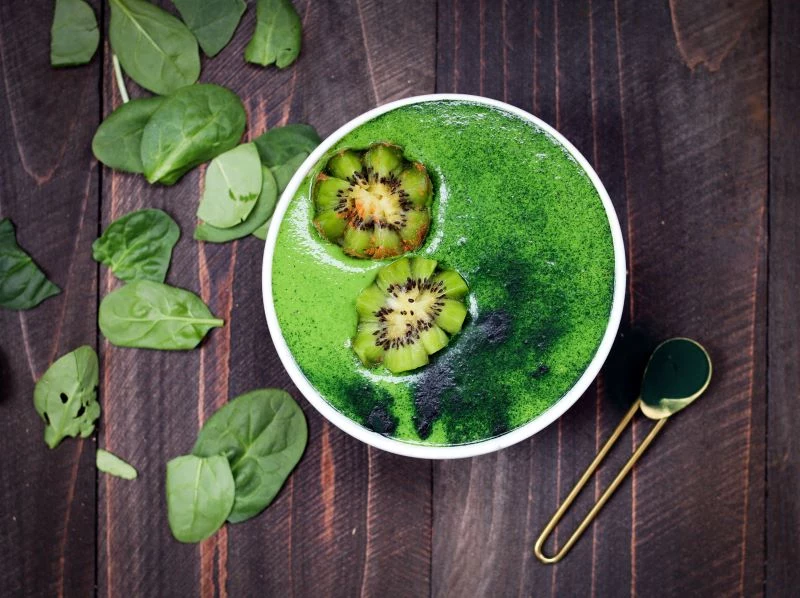
So, How Does It Actually Work? (It’s More Than Just Salads)
Most people get that vegetables are good for them. But to make this lifestyle stick, it helps to understand the ‘why’ behind it all. Knowing the mechanics is the difference between just following a recipe and truly knowing how to cook. Let’s break it down.
For Your Blood Pressure & Heart Health
High blood pressure is a huge focus in my practice because it puts so much stress on your heart and arteries. Plants tackle this in a couple of clever ways.
First, it’s all about the potassium-sodium balance. The standard modern diet is often overloaded with sodium (from processed foods) and seriously lacking in potassium. This combo tells your body to hang onto water, which increases your blood volume and drives up your blood pressure. Plant foods are the complete opposite—they’re naturally packed with potassium and low in sodium. Things like sweet potatoes, spinach, beans, and bananas are potassium powerhouses. When you load up on these, you help your body release excess fluid, which can naturally lower your blood pressure. It’s one of the core principles behind many successful heart-healthy eating plans.
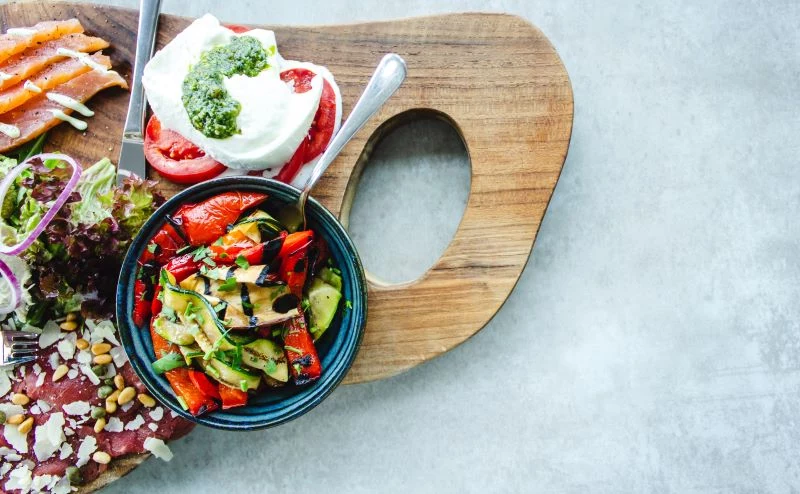
The other hero is a molecule called nitric oxide. Think of it as a messenger that tells your arteries to relax and widen, which allows blood to flow more easily. And what helps your body make it? Leafy greens! Veggies like spinach, arugula, and beets are full of natural compounds that your body converts into nitric oxide. I often tell my clients that eating a big spinach salad is like giving your arteries a little spa treatment, making them more flexible for a few hours. When you do that consistently, their overall function improves. It’s pretty amazing to see.
For Weight Management
This is where we talk about feeling full without overdoing it. It comes down to something called caloric density. For example, 100 calories of broccoli is a pretty big pile of food—it’s full of water and fiber and takes up a lot of space in your stomach. On the other hand, 100 calories of cheese or oil is a tiny amount. A diet based on whole plant foods is naturally lower in caloric density, meaning you can eat a larger, more satisfying volume of food for fewer calories. No more feeling deprived!
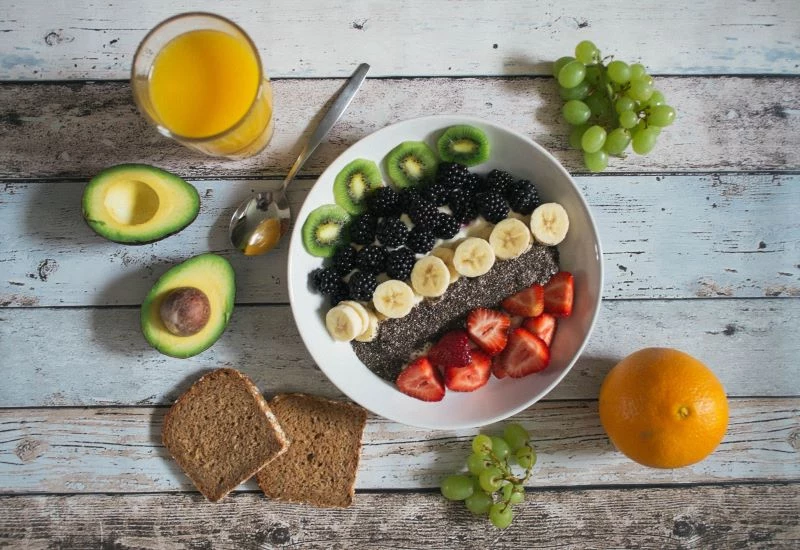
And then there’s fiber, the unsung hero of appetite control. Soluble fiber (in oats, beans, apples) creates a gel in your stomach that slows down digestion, keeping you full and stabilizing your blood sugar. Insoluble fiber (in whole grains, nuts, and veggies) adds bulk, physically stretching your stomach to send ‘I’m full!’ signals to your brain. I had a client once tell me, “It’s wild. I feel like I’m eating more food than ever, but I’m finally losing weight.” That’s the magic of focusing on nutrient density.
For Your Gut Health
One of the coolest frontiers in health is the gut microbiome—that little city of trillions of bacteria living in your digestive tract. What do those good gut bugs eat? Fiber. They ferment the fibers our bodies can’t digest and produce incredibly beneficial compounds, especially one called butyrate. Butyrate is the main fuel source for the cells lining your colon, keeping that barrier strong and healthy. A diet low in fiber essentially starves your inner garden, which can lead to all sorts of issues. When you eat a wide variety of plants, you’re not just feeding yourself; you’re cultivating a diverse and thriving microbiome.
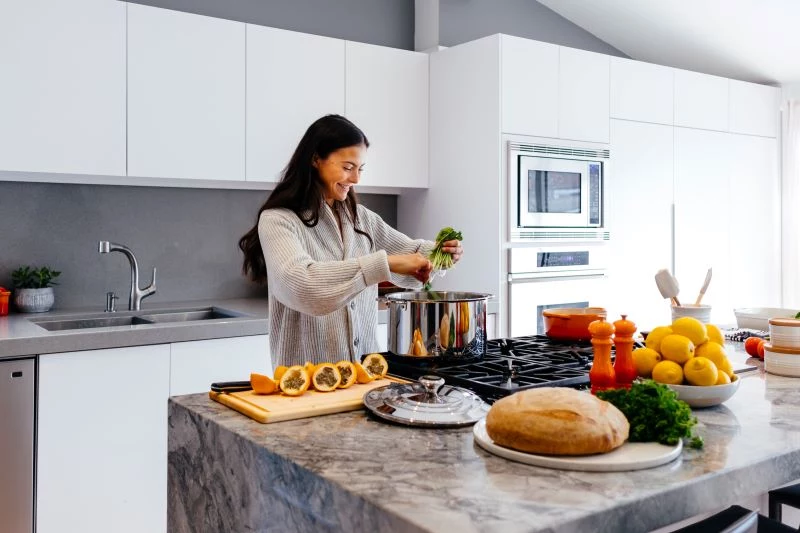
Building Your Plate Like a Pro
Okay, enough science. How do you actually put this on your plate every day without getting overwhelmed? Forget complicated calorie counting. I teach my clients a simple visual tool: The Plate Method.
For most meals, just mentally divide your plate:
- Half Your Plate: Non-Starchy Veggies. This is your base. Think broccoli, cauliflower, leafy greens, bell peppers, zucchini, carrots. The more colors, the better! This gives you tons of nutrients and fiber for very few calories.
- One-Quarter of Your Plate: Plant-Based Protein. This is key for staying full and maintaining muscle. Fill this spot with lentils, beans (black, kidney, chickpeas), tofu, tempeh, or edamame.
- One-Quarter of Your Plate: Complex Carbs. This is for sustained energy. Go for whole, unprocessed sources like quinoa, brown rice, whole-wheat pasta, sweet potatoes, or oats.
And don’t forget to add a little healthy fat, like a few slices of avocado, a sprinkle of pumpkin seeds, or a drizzle of a good olive oil. This simple structure ensures you’re balanced and satisfied every time.
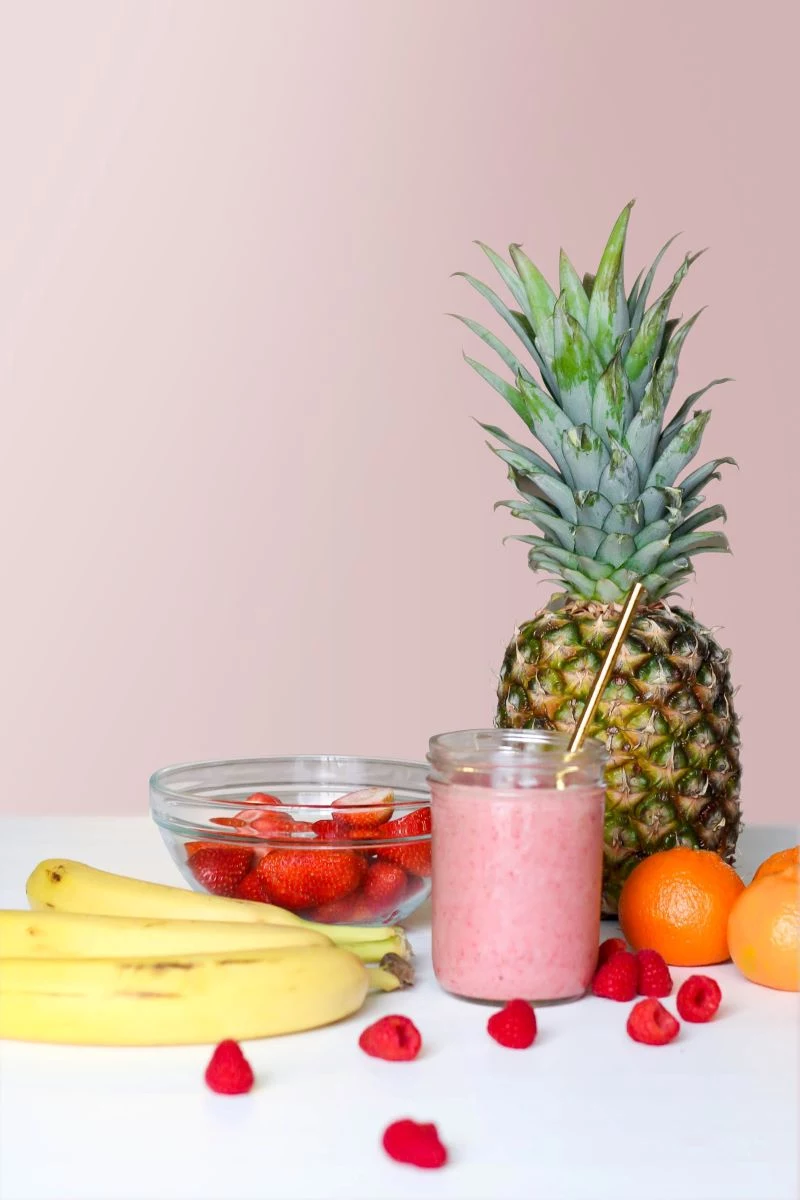
A Quick Word on Protein
Let’s bust an old myth. You do NOT need to stress about “protein combining” at every meal (like making sure you eat rice and beans together). Your body is smart and keeps a pool of amino acids from everything you eat all day. As long as you’re eating a variety of plant foods, you’ll be just fine. To put your mind at ease, getting enough protein is totally doable:
- Tofu & Tempeh: These soy-based options are protein champs. Tofu is incredibly versatile and great for scrambles or absorbing the flavor of a stir-fry. Tempeh, its fermented cousin, is firmer with a nutty taste—it’s amazing when sliced thin and fried up like bacon bits. You’ll find about 20-30 grams of protein per cup.
- Lentils & Beans: These are the budget-friendly superstars. A cup of cooked lentils packs about 18 grams of protein, and chickpeas come in around 15 grams. They’re perfect for soups, chilis, salads, and curries.
- Quinoa: Even grains can pitch in! Quinoa is a complete protein on its own and provides about 8 grams per cooked cup, making it a fantastic base for any meal.
As a professional, my job is to be honest about the hurdles. A poorly planned plant-based diet can cause problems. But being aware of the pitfalls is the first step to avoiding them.
The #1 Non-Negotiable: Vitamin B12
If you only remember one warning, make it this one. Vitamin B12 is made by bacteria, not plants. Since our modern food supply is so clean, we don’t get it from lingering soil on our vegetables. There are NO reliable unfortified plant sources of B12. This is not up for debate in the scientific community.
A B12 deficiency is serious and can cause irreversible nerve damage. The scary part is that symptoms can take years to show up, so you might feel fine while the damage is quietly happening. So, here’s the rule: if you eat a fully plant-based diet, you must supplement with B12. I generally recommend a simple, daily dose of 250 mcg of cyanocobalamin. You can find trusted brands like NOW Foods or Garden of Life online or in most health food stores for under $15 a bottle, which will last for months. This is a non-negotiable for your health and safety.
The Elephant in the Room: Gas and Bloating
Heads up! When you suddenly increase your fiber intake, your gut bacteria are going to have a party. And the byproduct of that party is… gas. This is totally normal and usually temporary. Here’s how to manage it:
- Start slow. Don’t go from zero to a giant bean burrito overnight. Add high-fiber foods gradually over a few weeks.
- Drink more water. Fiber needs water to do its job properly.
- Cook beans thoroughly. If you’re using dried beans, make sure they are very well-cooked and soft. Canned beans (rinsed well!) are often easier on the digestive system at first.
Other Key Nutrients to Watch
- Iron: The type of iron in plants isn’t absorbed as easily as the kind in meat. But there’s an easy trick: pair iron-rich foods (lentils, spinach, tofu) with a source of Vitamin C. A squeeze of lemon on your lentil soup or some bell peppers in your tofu stir-fry can dramatically boost absorption. Quick tip: Avoid drinking coffee or black tea with your iron-rich meals, as they can block uptake.
- Omega-3s: Crucial for your brain! You can get a base level from flaxseeds, chia seeds, and walnuts. For a more direct and powerful source, I often recommend an algae-based oil supplement. (This is where the fish get their omega-3s from, anyway!) Brands like Nordic Naturals or Nested Naturals offer great vegan options.
- Calcium & Vitamin D: These work together for bone health. Most plant milks are now fortified to match cow’s milk—just check the label. For Vitamin D, a supplement is a good idea for almost everyone, especially if you live somewhere with long winters.
The Processed Food Trap
The plant-based food aisle has exploded, which is both good and bad. It’s easier than ever to find a veggie burger, but many of these products are just as processed as the junk food you’re trying to avoid. They can be packed with sodium, refined oils, and weird additives. Remember, the health benefits come from eating WHOLE foods. These convenience products are fine for a treat, but they shouldn’t be the foundation of your diet.
Making It Work in the Real World
My Favorite Time-Saving Hacks
- Batch Cook Grains: On Sunday, make a big pot of quinoa or brown rice. Store it in the fridge to use as a quick meal base all week.
- Embrace Canned Beans: Don’t have time to soak dried beans? Canned beans are a lifesaver. Just be sure to give them a good rinse to wash away excess sodium.
- Use Your Freezer: Frozen fruits and veggies are just as nutritious as fresh, often cheaper, and won’t go bad in your crisper drawer. Perfect for smoothies and stir-fries.
How to Eat Out and Stay on Track
This is a big one for most people! My go-to move is to check the menu online before I even leave the house. That way, I have a plan and don’t feel pressured. Look for cuisines that are naturally plant-friendly, like Thai (veggie curries), Indian (lentil dals), or Ethiopian. Don’t be afraid to politely ask for modifications. A simple “Could you make the veggie fajitas without cheese or sour cream?” usually works great. Oh, and the ‘sides’ section of a menu is often a goldmine for things like roasted vegetables, baked potatoes, and bean salads.
A Sample Day of Eating
Wondering what this all looks like in practice? It’s easier (and tastier) than you think. Here’s a sample day:
- Breakfast: Oatmeal made with soy milk, topped with a cup of mixed berries, a tablespoon of walnuts, and a sprinkle of cinnamon.
- Lunch: A huge salad with a mix of leafy greens, bell peppers, cucumber, and tomatoes, topped with a full cup of chickpeas and a tahini-lemon dressing.
- Dinner: Spaghetti with a hearty lentil bolognese sauce, served with a side of steamed broccoli.
- Snack: An apple with a big spoonful of peanut butter.
Your First-Week Shopping List (Budget-Friendly!)
Starting out can feel intimidating, so here’s a simple shopping list to get you through the first week. If you shop smart, you can get all of this for around $40-$50.
- Produce Aisle: A bag of spinach, a head of broccoli, a bag of carrots, a few onions, garlic, bananas, and a bag of apples. Grab a sweet potato or two as well. (Approx. $15-20)
- Bulk Bins (Your Best Friend!): A small bag of rolled oats (~$2.50), brown rice (~$3), and dried lentils (~$2). This stuff is incredibly cheap and will last for weeks.
- Canned Goods Aisle: A couple of cans of chickpeas and black beans (~$1.50 each), and a can of crushed tomatoes for your sauce (~$2).
- Pantry & Dairy-Free: A jar of natural peanut butter, a carton of unsweetened almond or soy milk, and maybe a block of firm tofu to try. (Approx. $10)
Your 7-Day ‘Add-Don’t-Subtract’ Challenge
Big changes can be overwhelming, so I never tell clients to switch everything overnight. That’s a recipe for burnout. Let’s try a gradual approach. I call it the ‘Add-Don’t-Subtract’ Challenge.
- Week 1 Goal: Just Add. For the first week, don’t worry about removing anything. Your only goal is to add one extra serving of vegetables to your lunch and dinner each day. That’s it. Get used to having more plants on your plate.
- Week 2 Goal: Master One Meal. Now, pick one meal to make fully plant-based. Breakfast is often the easiest. Swap your usual for oatmeal or a smoothie.
- Week 3 Goal: Adapt a Favorite. Choose a go-to meal, like chili or tacos. This week, try making it with black beans or lentils instead of ground meat. You’ll be shocked at how delicious it is.
This slow and steady approach builds habits that actually last. Give it a try!
Disclaimer: The information in this article is for educational purposes only. It is not intended as a substitute for professional medical advice, diagnosis, or treatment. Always seek the advice of your physician or a qualified health provider like a registered dietitian with any questions you may have regarding a medical condition or before making significant changes to your diet.
Inspirational Gallery
The Nicoya Peninsula in Costa Rica is one of the world’s
A common pitfall: Swapping meat for highly processed vegan alternatives isn’t always a health upgrade. While convenient, many plant-based burgers, sausages, and cheeses are high in sodium, saturated fats, and additives. The goal is a *whole-food*, plant-based diet. Read labels and prioritize ingredients you can recognize.
- A rainbow of colors on your plate.
- A perfect balance of protein, healthy fats, and complex carbs.
- Endless variety so you never get bored.
The secret? Master the art of the
But what exactly is that
Just one cup of cooked lentils provides over 15 grams of fiber—that’s more than half of the recommended daily intake for most adults.
Don’t be surprised if your taste buds seem to
Tofu: Made from condensed soy milk pressed into blocks, its neutral flavor makes it a versatile chameleon, absorbing marinades beautifully. Perfect for scrambles, stir-fries, or creamy sauces.
Tempeh: A fermented soybean cake with a firm texture and a nutty, mushroom-like flavor. It’s less processed and higher in protein and fiber. It holds its shape well, making it ideal for grilling or pan-searing.
Both are fantastic, but for a gut-friendly probiotic boost and a heartier bite, give tempeh a try.
Eating plant-based doesn’t have to break the bank. In fact, some of the most nutritious foods are also the most affordable. Focus your shopping list on these budget-friendly powerhouses:
- Dried Lentils and Beans: Ounce for ounce, they are one of the cheapest and most nutrient-dense protein sources available.
- Seasonal Produce: Buying fruits and vegetables that are in season is always more economical. Check local farmers’ markets for the best deals.
- Oats: A large container of rolled oats for breakfast can cost less than a single coffee shop pastry and last for weeks.
Keep an eye on the beverage aisle, where innovation is booming. Plant-based milks have moved far beyond just soy and almond. Brands like Oatly have popularized oat milk for its creamy texture, while Ripple Foods uses pea protein to create a milk that’s high in protein and remarkably similar in consistency to dairy.
- Canned Goods: A few cans of chickpeas, black beans, and diced tomatoes are a lifesaver for last-minute meals.
- Grains & Seeds: Quinoa, brown rice, chia seeds, and flax seeds provide fiber and substance.
- Flavor Boosters: Tamari (or soy sauce), nutritional yeast, and a good selection of dried herbs and spices are essential for making dishes delicious.










